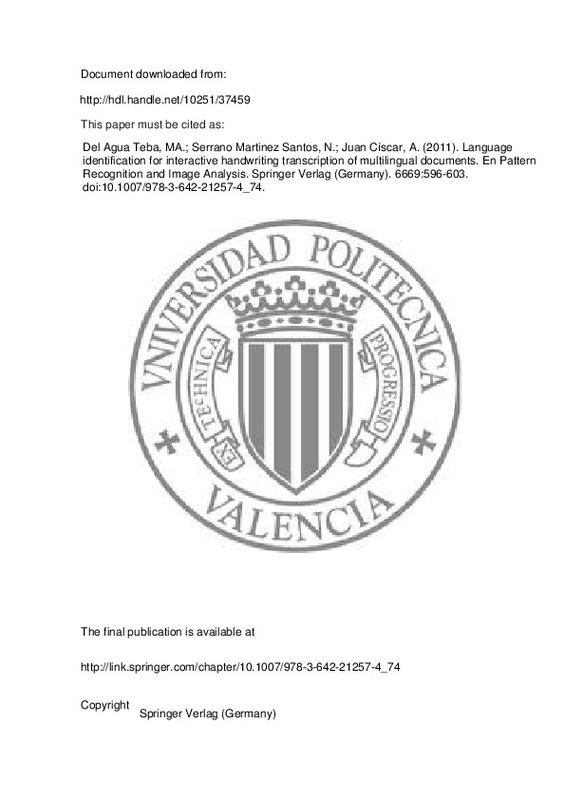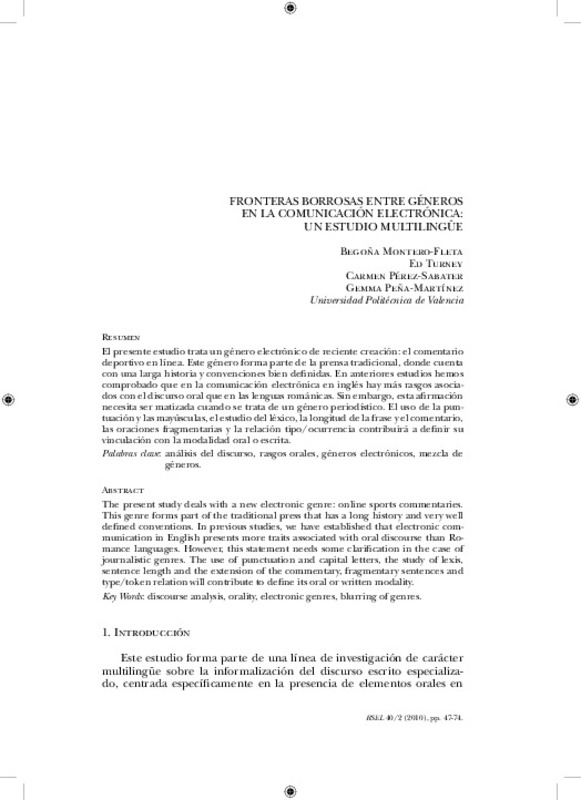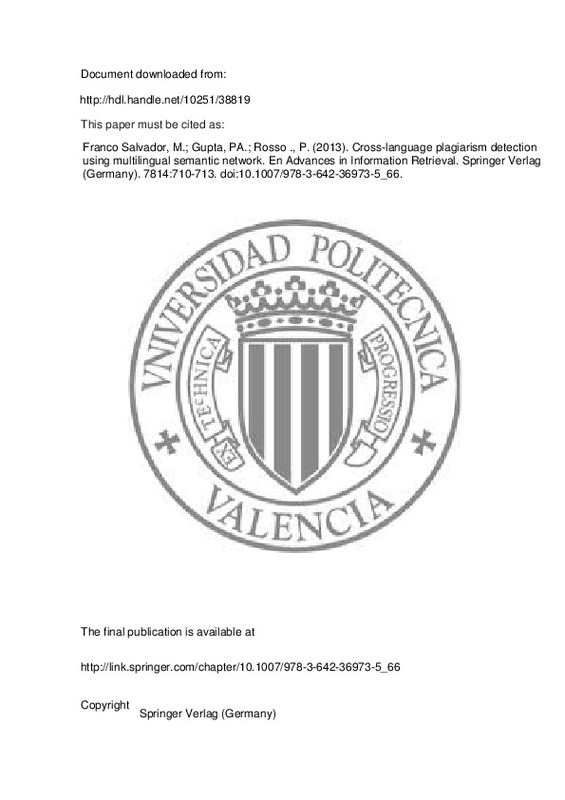JavaScript is disabled for your browser. Some features of this site may not work without it.
Buscar en RiuNet
Listar
Mi cuenta
Estadísticas
Ayuda RiuNet
Admin. UPV
Teachers’ language use and attitudes towards multilingual education in primary education
Mostrar el registro sencillo del ítem
Ficheros en el ítem
| dc.contributor.author | Guzman-Alcon, Irene
|
es_ES |
| dc.coverage.spatial | east=-0.7532809; north=39.4840108; name=Comunitat Valenciana, Espanya | es_ES |
| dc.date.accessioned | 2020-03-24T10:19:20Z | |
| dc.date.available | 2020-03-24T10:19:20Z | |
| dc.date.issued | 2019-12-28 | |
| dc.identifier.issn | 1133-4770 | |
| dc.identifier.uri | http://hdl.handle.net/10251/139282 | |
| dc.description.abstract | [ES] El uso exclusivo del idioma de destino en el aula ha dominado la enseñanza de idiomas en el pasado. Sin embargo, la mezcla de idiomas, a menudo referida como translanguaging, se observa con frecuencia en aulas multilingües. El objetivo de este artículo es examinar las opciones lingüísticas de los profesores en el aula y las actitudes hacia los tres idiomas en la comunidad valenciana. Los datos se recopilaron en tres escuelas que adoptaron tres modelos de idiomas diferentes, a saber, los de un modelo de idioma basado en el inglés, el basado en el catalán y el basado en el español. El esquema de observación de Lo (2015) se utilizó para analizar el uso del lenguaje de los maestros en treinta sesiones en el aula. Además, treinta maestros, diez de cada escuela modelo de idiomas, respondieron un cuestionario y participaron en entrevistas semiestructuradas con el investigador. Los hallazgos del estudio muestran que, aunque los docentes creen que el multilingüismo se fomenta en la educación, s | es_ES |
| dc.description.abstract | [EN] The exclusive use of the target language in the classroom has dominated language teaching in the past. However, the mixing of languages, often referred as translanguaging is frequently observed in multilingual classrooms. The aim of this paper is to examine teachers’ linguistic choices in the classroom, and their attitudes towards the three languages in the educational context in the Valencian community. Data were collected in three schools adopting three different language models, namely those of an English-based, a Catalan-based, and a Spanish-based language model. Lo’s (2015) observation scheme was used to analyse teachers’ language use in thirty classroom sessions. In addition, thirty teachers, ten from each language model school, answered a questionnaire and participated in semi-structured interviews with the researcher. Findings from the study show that, although teachers believe that multilingualism is encouraged in education, they mainly rely on one language: English in the Eng | es_ES |
| dc.language | Inglés | es_ES |
| dc.publisher | Universitat Politècnica de València | es_ES |
| dc.relation.ispartof | Lenguaje y Textos | es_ES |
| dc.rights | Reconocimiento - No comercial - Sin obra derivada (by-nc-nd) | es_ES |
| dc.subject | Multilingual education | es_ES |
| dc.subject | Language attitudes | es_ES |
| dc.subject | Teachers’ multilingual competence | es_ES |
| dc.subject | Primary Education | es_ES |
| dc.subject | CLIL | es_ES |
| dc.subject | Educación multilingüe | es_ES |
| dc.subject | Actitudes lingüísticas | es_ES |
| dc.subject | Competencia multilingüe de los profesores | es_ES |
| dc.subject | Educación Primaria | es_ES |
| dc.title | Teachers’ language use and attitudes towards multilingual education in primary education | es_ES |
| dc.title.alternative | El uso de las lenguas y las actitudes de los maestros hacia la Educación Multilingue en Primaria | es_ES |
| dc.type | Artículo | es_ES |
| dc.identifier.doi | 10.4995/lyt.2019.11475 | |
| dc.rights.accessRights | Abierto | es_ES |
| dc.description.bibliographicCitation | Guzman-Alcon, I. (2019). Teachers’ language use and attitudes towards multilingual education in primary education. Lenguaje y Textos. 0(50):107-111. https://doi.org/10.4995/lyt.2019.11475 | es_ES |
| dc.description.accrualMethod | OJS | es_ES |
| dc.relation.publisherversion | https://doi.org/10.4995/lyt.2019.11475 | es_ES |
| dc.description.upvformatpinicio | 107 | es_ES |
| dc.description.upvformatpfin | 111 | es_ES |
| dc.type.version | info:eu-repo/semantics/publishedVersion | es_ES |
| dc.description.volume | 0 | es_ES |
| dc.description.issue | 50 | es_ES |
| dc.identifier.eissn | 2530-0075 | |
| dc.relation.pasarela | OJS\11475 | es_ES |
| dc.description.references | CENOZ, J. (2001). Three languages in contact: Language attitudes in the Basque Country. In D. Lasagabaster & J. M. Sierra (Eds.). Language awareness in the foreign language classroom (pp. 37-60). Zarautz: University of the Basque Country. | es_ES |
| dc.description.references | CENOZ, J. (2003). The influence of age on the acquisition of English: general proficiency, attitudes and code- mixing. In M. P. García Mayo & M. L. García Lecumberri (Eds.). Age and the acquisition of English as a foreign language (pp. 77-93). Clevedon: Multilingual Matters. https://doi.org/10.21832/9781853596407-005 | es_ES |
| dc.description.references | CENOZ, J. (2009). Towards multilingual education: Basque educational research from an international perspective. Bristol, UK; Buffalo, NY: Multilingual Matters. https://doi.org/10.21832/9781847691941 | es_ES |
| dc.description.references | CENOZ, J., & GORTER, D. (2014). Focus on multilingualism as an approach in educational contexts. In A. Creese & A. Blackledge (Eds.), Heteroglossia as practiceand pedagogy (pp. 239-254). Berlin: Springer. https://doi.org/10.1007/978-94-007-7856-6_13 | es_ES |
| dc.description.references | CENOZ, J. (2015). Content-based instruction and content and language integrated learning: the same or different? Language, Culture and Curriculum, 28(1), 8-24. https://doi.org/10.1080/07908318.2014.1000922 | es_ES |
| dc.description.references | CENOZ, J., & GORTER, D. (2011). Focus on multilingualism: A study of trilingual writing. The Modern Language Journal, 95(3), 356-369. https://doi.org/10.1111/j.1540-4781.2011.01206.x | es_ES |
| dc.description.references | GARRETT, P. (2010). Attitudes to Language. Cambridge: Cambridge University Press. https://doi.org/10.1017/CBO9780511844713 | es_ES |
| dc.description.references | LASAGABASTER, D., & SAFONT, M. P. (2008). Un análisis de las actitudes lingüísticas en dos comunidades bilingües. In C. M. Bretones et al. Applied Linguistics Now: Understanding Language and Mind (pp. 183-196). Proceedings of the XXVI AESLA Conference. Almería. April 3-5, 2008. Almería: Universidad de Almería. | es_ES |
| dc.description.references | LASAGABASTER, D., & HUGUET, A. (Eds.). (2007). Multilingualism in European bilingual contexts: language use and attitudes. Clevedon: Multilingual Matters. https://doi.org/10.21832/9781853599316 | es_ES |
| dc.description.references | LO, Y. Y. (2015). How much L1 is too much? Teachers' language use in response to students' abilities and classroom interaction in Content and Language Integrated Learning. International Journal of Bilingual Education and Bilingualism, 18(3), 270-288. https://doi.org/10.1080/13670050.2014.988112 | es_ES |
| dc.description.references | NIGHTINGALE, R. (2016). The effect of out-of-school media contact on language attitudes in multilingual adolescents: A complex psycho-sociolinguistics system. Unpublished Ph.D thesis. Jaume I University. | es_ES |
| dc.description.references | PORTOLÉS FALOMIR, L. (2011). A multilingual portrait of language attitudes in higher education: The effect of internal and external factors. Saarbrücken: VDM Verlag Dr. Müller. | es_ES |
| dc.description.references | SAFONT JORDÀ, M. P., & PORTOLÉS FALOMIR, L. (Eds.). (2015). Learning and using multiple languages: current findings from research on multilingualism. Newcastle upon Tyne: Cambridge Scholars | es_ES |











